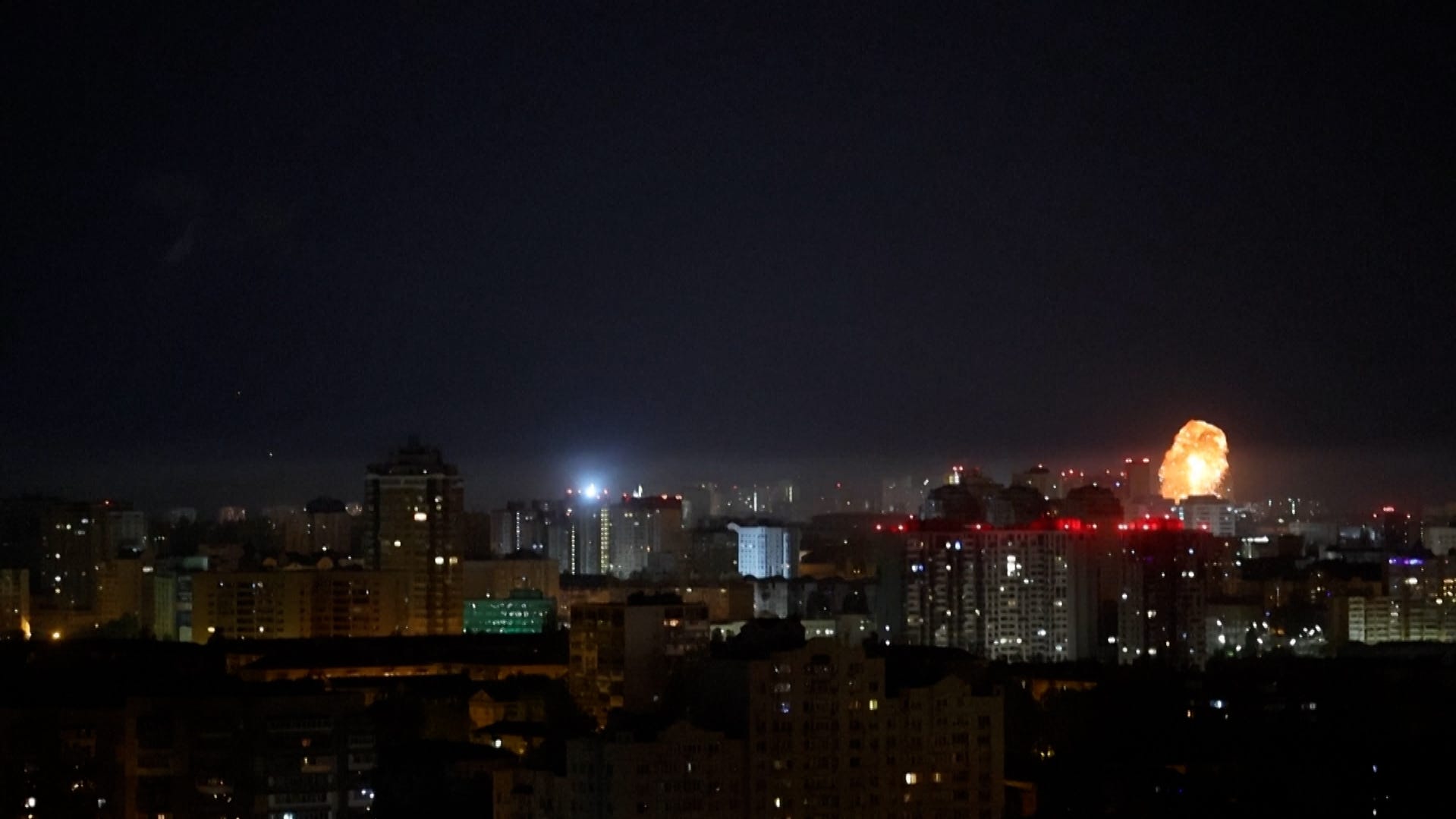Department of Government Efficiency workers have been scrutinizing government spending. But should they be given such sweeping access to private data?
How did Elon Musk become so powerful in Washington?
As leader of the Department of Government Efficiency (DOGE), Elon Musk has made major changes, but who is Elon Musk and how did he rise in Washington?
Minutes after DOGE personnel gained access to computer information systems at the National Labor Relations Board, a computer in Russia appeared to make several attempts to log in using all the correct credentials, a whistleblower recently alleged to members of Congress.
Those attempts and a range of irregularities, including a massive download of sensitive information by DOGE, are listed in the affidavit of Dan Berulis, a security and systems specialist in the board’s information technology office.
The attempted access by Russian actors “heightens concerns to a level not previously seen and could have destroyed the agency’s entire infrastructure in a matter of minutes,” said Andrew Bakaj, chief legal counsel for Whistleblower Aid, who is assisting Berulis in the whistleblower action.
Workers associated with Elon Musk‘s Department of Government Efficiency (DOGE) started arriving in offices shortly after President Donald Trump‘s inauguration in January. They have been busy in many federal agencies, scrutinizing everything from building leases and documents stored with Google to contracts and websites, with key word searches for terms like “diversity” and “climate change.”
The labor relations board case is the latest in a series of controversies over DOGE requests for sweeping access to government databases with personal information about federal employees and other Americans.
Three employees were placed on administrative leave at the Department of Interior in April. They had wrangled with DOGE personnel for weeks over unfettered access to a massive trove of financial and personnel information, according to documents provided by Timothy Whitehouse, executive director of the Public Employees for Environmental Responsibility.
The employees join dozens of federal workers who have left, been placed on administrative leave or been fired after clashing with DOGE teams over access to protected data systems. The workers also raised questions about what’s happening with the tremendous volumes of data DOGE has accessed.
Congress asking questions
Now Democrats in Congress want answers. On April 24, they sent two letters.
The first, signed by two Congressional Democrats, Jared Huffman of California and Maxine Dexter of Oregon, was sent to the U.S. Comptroller General asking the Governmental Accounting Office to investigate DOGE’s data access across several federal agencies, including the Department of the Interior.
“These agencies maintain information that, if improperly accessed or disclosed, could put companies out of business, drain retirement savings, move markets, and compromise national security,” the letter said.
At risk are high-value assets – systems so critical that their loss or interruption “would significantly impair an agency’s ability to perform its mission or conduct business,” according to the letter.
In a separate April 24 letter, 58 members of Congress demanded the labor board’s acting general counsel, William Cowen, answer a number of questions including how DOGE officials got approval for the labor board access, what information was taken and why certain controls were disabled. The labor relations board protects employee rights and investigates unfair labor practices.
State governments, Social Security recipients, unions and retired employees have also filed lawsuits over DOGE’s ongoing efforts to access data systems.
“The rule book is being thrown out and these systems are being run by a shadow government that is being run by DOGE-affiliated people who get in their way,” said PEER’s Whitehouse. “It’s a story playing out in every agency.”
A whistleblower’s alert
Things got weird for Berulis on March 3, the day a long black SUV with a police escort entered the agency’s parking garage, carrying DOGE personnel, he said. Later that day, he said, he received a call advising him the staff should ignore standard operating procedures when creating computer accounts for DOGE personnel.
Berulis was told there should be no record of the accounts and that the DOGE team required “the highest level of access and unrestricted access to internal systems,” he stated in a declaration.
The access provided “essentially unrestricted permission to read, copy, and alter data,” more access than the department’s Chief Information Officer, he said. A suggestion that they be given accounts with less access was dismissed without discussion.
After Berulis raised concerns internally and was working with Whistleblower Aid on his declaration, someone taped a threatening note to the door of his home, with personal information and drone photos of him walking his dog, Bakaj, the Whistleblower Aid attorney, reported.
Berulis’ complaint suggested DOGE technologists may have been responsible for a “significant cyber security breach.” He detected the download of about 10 gigabytes worth of data, the equivalent of a section of the New York Public Library.
In response to a request from USA TODAY, the labor board stated it had no comment but shared a memo to staff dated April 16, that said prior to April 15 the agency “had no official contact with any DOGE personnel.”
Other clashes with DOGE
At the National Oceanic and Atmospheric Administration, two employees in the office of the Chief Information Officer were placed on administrative leave, USA TODAY has confirmed with three sources, all of whom asked not to be identified for fear of retribution.
Other federal workers, particularly those who specialize in security and information systems, also have come forward with concerns, including about cybersecurity when built-in safeguards are circumvented:
∎ Erie Meyer, former chief technologist at the Consumer Financial Protection Bureau, resigned in February after DOGE members began asking for data privileges.
∎ On April 8, Reuters, citing two unnamed sources, reported DOGE is using artificial intelligence to conduct surveillance on at least one federal agency’s communications to monitor for sentiment against President Trump.
∎ Earlier in the year, 21 federal technology employees who worked for the U.S. Digital Service, rebranded to DOGE, resigned, stating they would not use their skills to dismantle critical public services. Their letter said DOGE fired technical experts, mishandled sensitive data, broke a critical system, and seemed to be trying to hide evidence of its access into computer systems.
At the Department of Interior, the DOGE team, citing the president’s order, demanded full, administrator-level access to detailed financial and personal information for more than 250,000 employees and more than 53 federal agencies, including the Supreme Court, according to documents provided by PEER.
The staff resisted, citing legal and security reasons. When the DOGE team pressed harder, several employees, including Associate Solicitor Anthony Irish, worked to draft a memo to the Interior Secretary, stating their concerns about granting full access to any one individual. They asked whether to grant or deny the request for access.
A summary of a department investigation dated April 3 states DOGE team member Stephanie Holmes thought the employees were seeking to obstruct and delay their access, while member Katrine Trampe said she didn’t fully understand why the employees continued to cite department policy when the executive order superseded any policy restrictions.
Ultimately, Irish, an 18-year veteran of the department, and two other career employees were placed on leave. Irish was notified on April 4 that he would be removed from his job.
The case is particularly troubling because it’s a “significant, significant cybersecurity risk with having only one or two people have complete access to everything,” said Whitehouse, a former attorney at the Environmental Protection Agency. Historically, such access was divided among a number of people for security reasons.
“Foreign actors are trying to get access to this kind of information every day,” he said. “Now they only need to get to one person and everything is opened up to them.”
Why is DOGE seeking access?
Explaining why DOGE is seeking such broad access has been a burning question for weeks.
Documents in the court cases have provided some explanation, but federal attorneys are still arguing in court to get DOGE representatives to testify.
Trump signed the executive order creating DOGE on Inauguration Day, setting its agenda to “modernize efficiency and productivity.”
The order stated the DOGE employees were to have “full and prompt access to all unclassified agency records, software systems and IT systems,” to the maximum extent allowed by law. The order also instructed DOGE teams to “adhere to rigorous data protection standards.”
A document in one of the lawsuits, over records at the Social Security Administration, stated DOGE wanted access to “identify data gaps that could make the systems work more efficiently,” and “identify opportunities to advance payment integrity and fraud reduction goals.”
Asked to explain why DOGE wants full access to the databases and emails, Anna Kelly, White House deputy press secretary, replied: “It is months-old news that President Trump signed an Executive Order to hire DOGE employees at agencies and coordinate data sharing. Their highly-qualified team has been extremely public and transparent in its efforts to eliminate waste, fraud, and abuse across the Executive Branch.”
Judges react
The courts have pushed back, saying in cases in New York and Maryland that DOGE exceeded its statutory authority both at the Office of Personnel Management and the Social Security Administration.
“…The DOGE team, never identified or articulated even a single reason for which the DOGE team needs unlimited access to SSA’s entire record systems, thereby exposing personal, confidential, sensitive, and private information that millions of Americans entrusted to their government,” U.S. District Court Judge Ellen Hollander, wrote in a March 20 ruling in the Maryland case.
On April 24, Hollander granted a preliminary injunction limiting DOGE access to Social Security data.
Contributing: Joey Garrison, Zac Anderson
Dinah Voyles Pulver, a national correspondent for USA TODAY, has covered the environment, climate change and other news for decades. Reach her at dpulver@usatoday.com or @dinahvp on Bluesky or X or dinahvp.77 on Signal.








